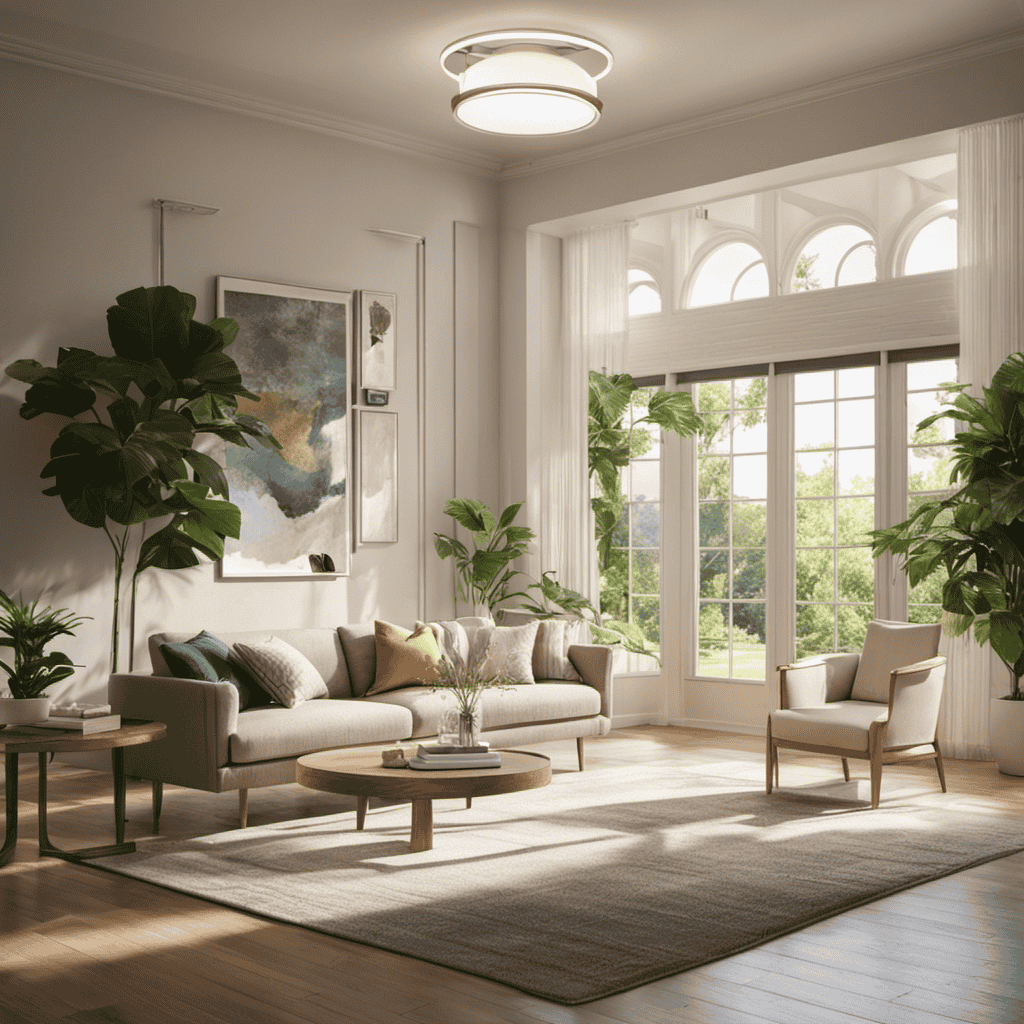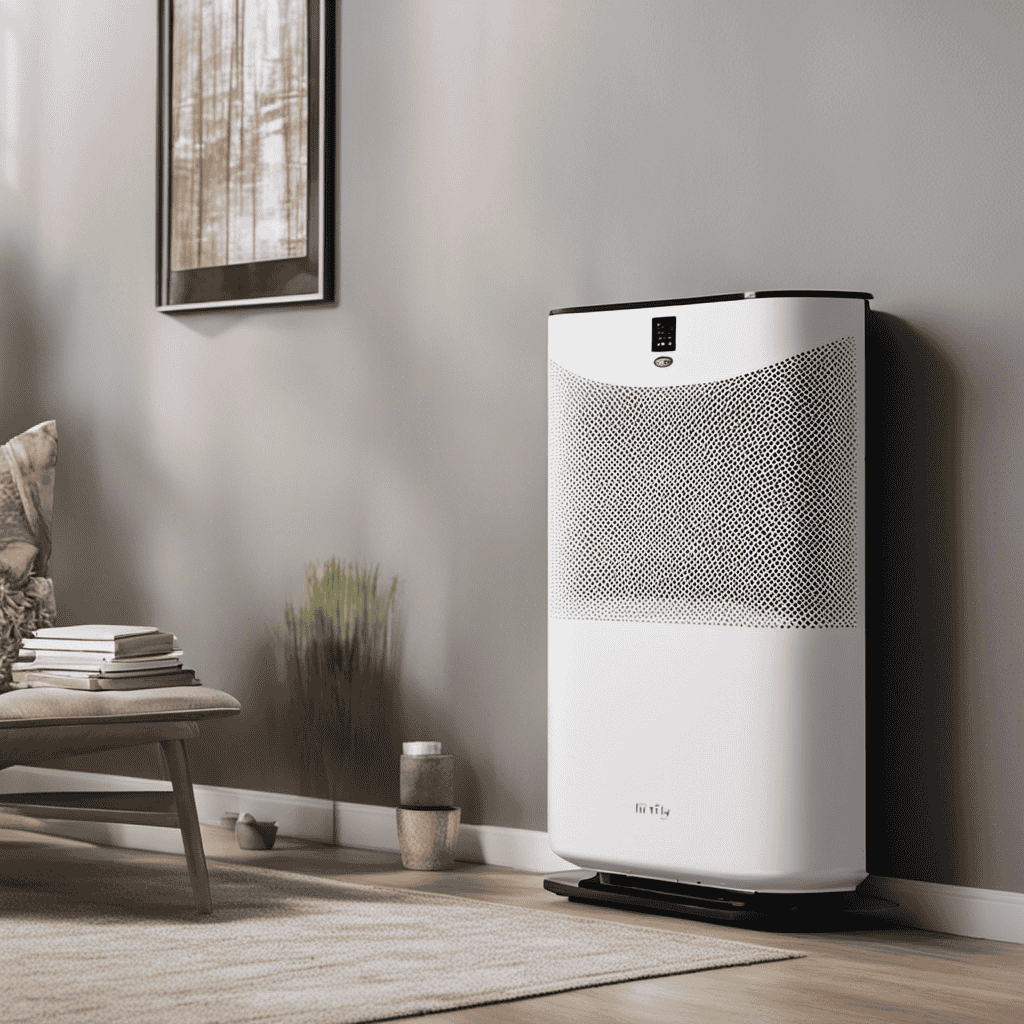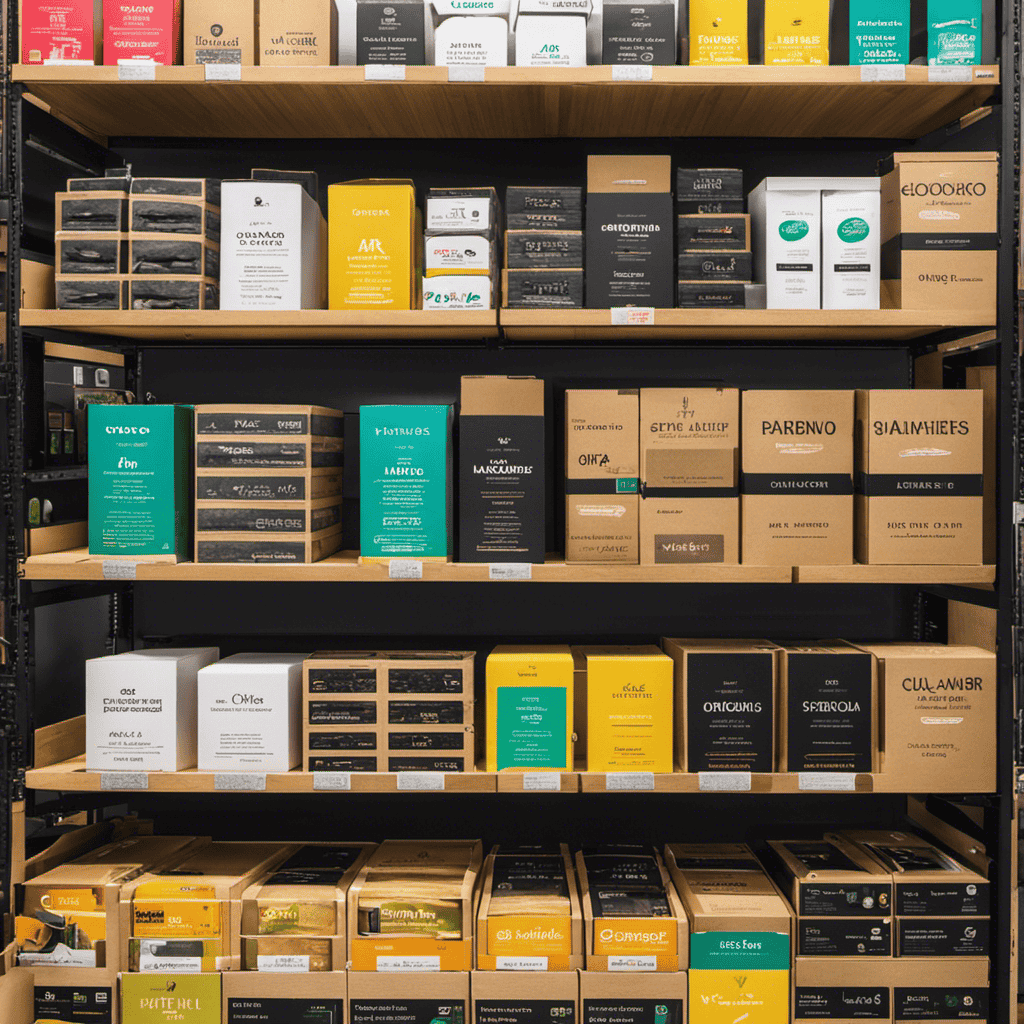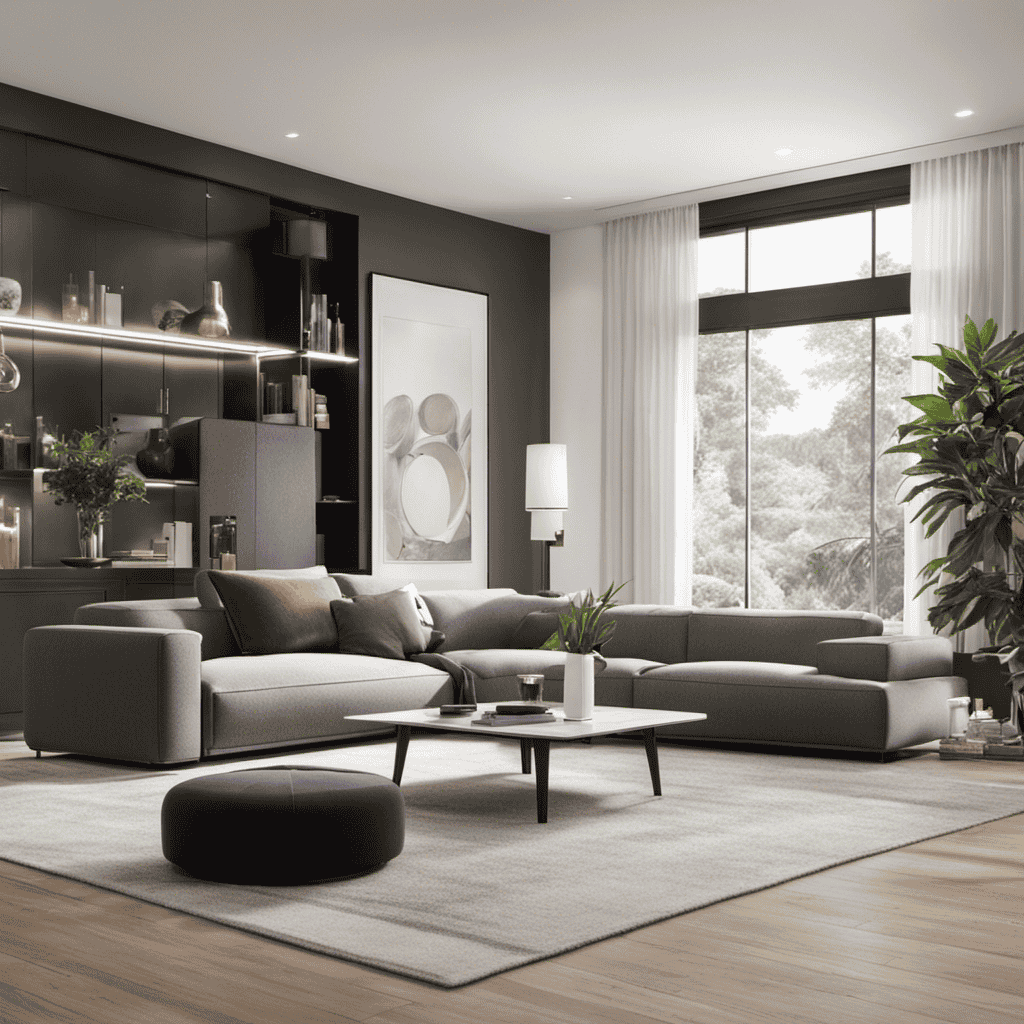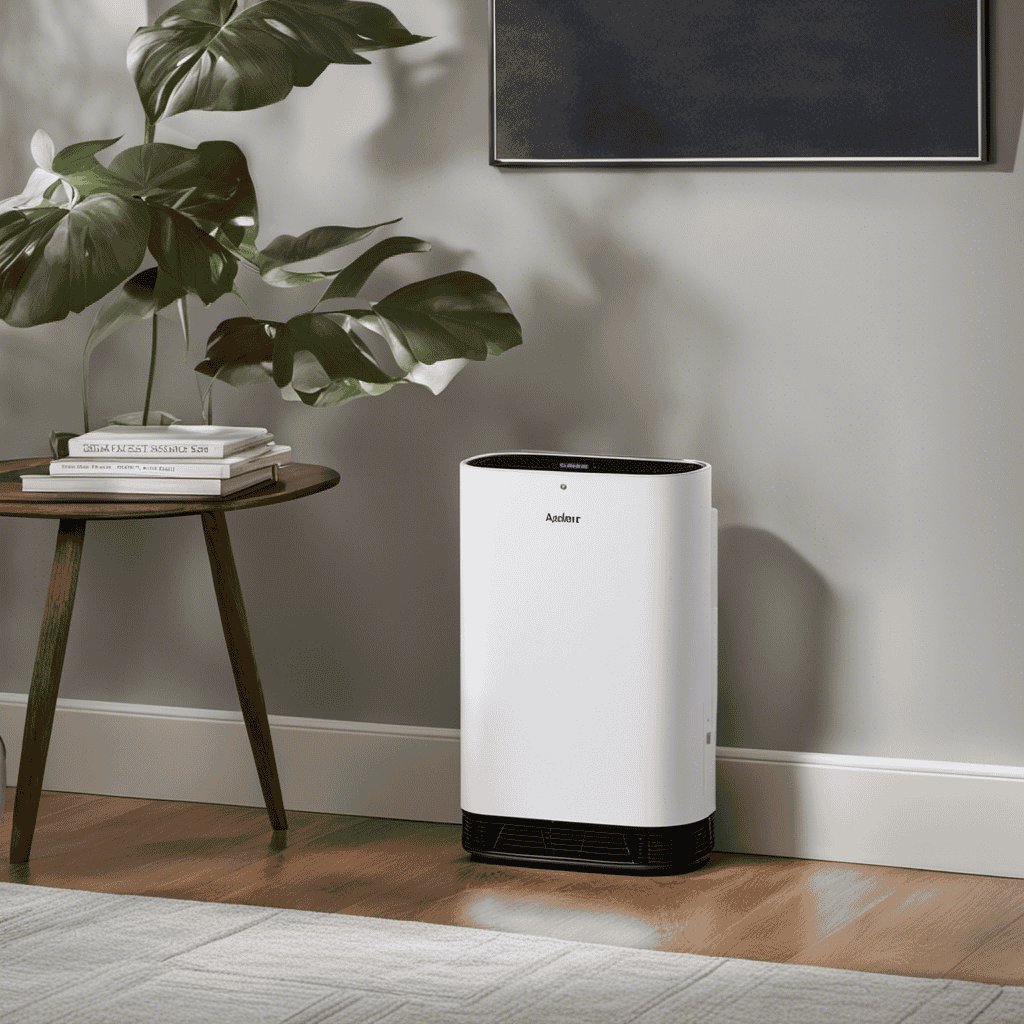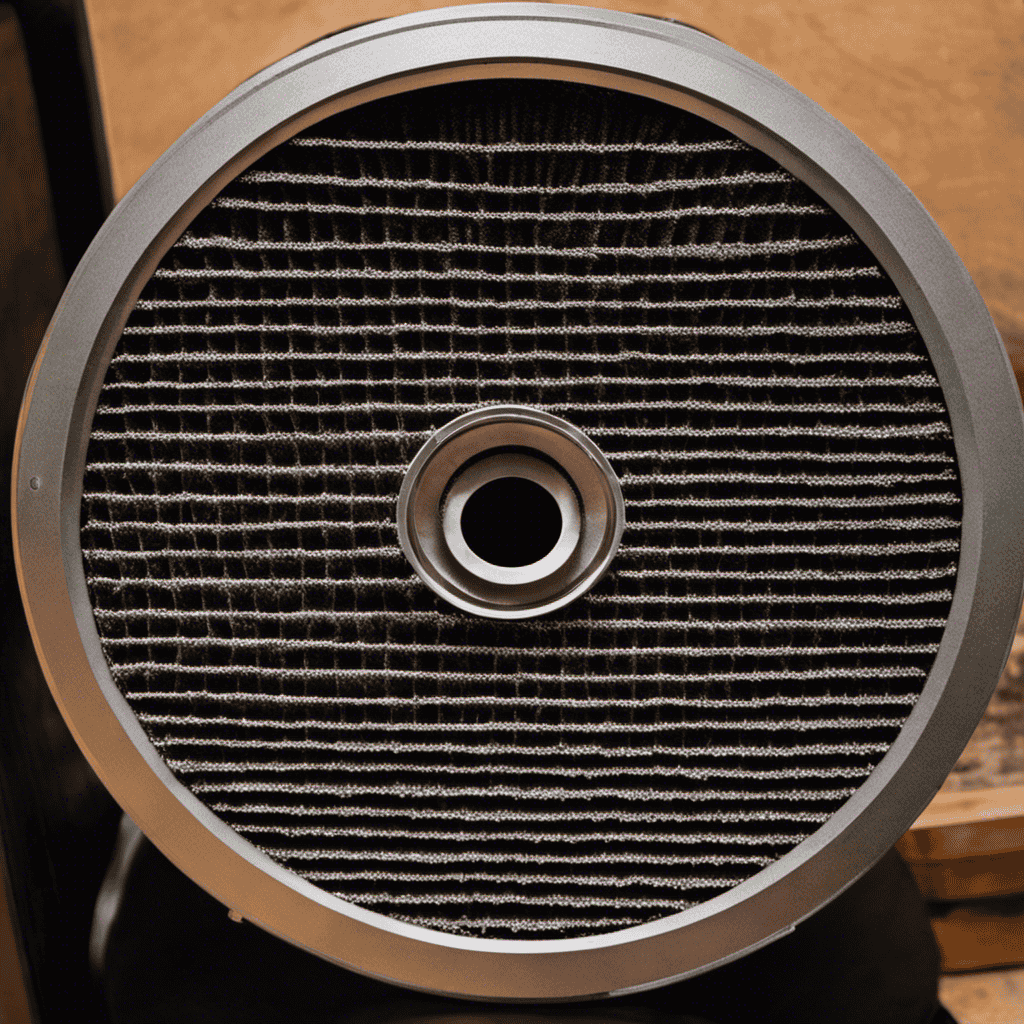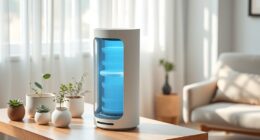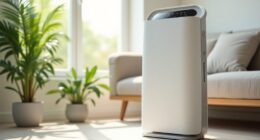An air purifier is like a protector ensuring the air we breathe is clean and healthy, making it a valuable asset in maintaining a healthy environment.
But how long should we keep it running?
In this article, I will delve into the optimal time for air purifier usage, the factors to consider in determining duration, and the recommended operating hours.
By understanding the benefits of extended use, finding the balance between too long and too short, and adjusting usage based on indoor air quality, we can make informed decisions to ensure the best air quality possible.
Key Takeaways
- Leaving the air purifier on for at least 8 hours a day is recommended for optimal air quality.
- Nighttime operation of the air purifier can significantly reduce allergens, pollutants, and volatile organic compounds (VOCs) in the air.
- Extended use of the air purifier can improve overall performance and longevity.
- Regular maintenance is important to optimize the air purifier’s performance.
Optimal Time for Air Purifier Usage
You should leave your air purifier on for at least 8 hours a day to ensure optimal air quality.
While it may be tempting to turn off the air purifier during nighttime, it is important to note that indoor air pollution can still occur while we sleep.
In fact, studies have shown that nighttime operation of air purifiers can significantly reduce allergens, pollutants, and even volatile organic compounds (VOCs) in the air.
This is especially true for individuals who suffer from allergies or asthma, as airborne particles and allergens tend to accumulate in the bedroom.
Additionally, keeping your air purifier running for extended periods can help improve its overall performance and longevity.
Regular air purifier maintenance, such as cleaning or replacing filters, is also essential in ensuring its effectiveness.
However, it is important to consider certain factors that may influence air purifier duration, such as room size, air quality, and individual needs.
Factors to Consider in Air Purifier Duration
When determining the duration to run an air purifier, it’s essential to consider factors such as room size and air quality. These factors can greatly impact the effectiveness of the air purifier and contribute to a healthier indoor environment. Here are four key factors to consider:
- Room size: Larger rooms may require longer run times to effectively clean the air.
- Air quality: If your indoor air quality is poor, running the air purifier for longer periods can help improve it.
- Nighttime usage: Running the air purifier at night can help ensure clean air while you sleep, promoting better respiratory health.
- Air purifier maintenance: Regularly cleaning and maintaining your air purifier can optimize its performance and prolong its lifespan.
Considering these factors, you can determine the appropriate duration to run your air purifier for optimal results. Now, let’s explore the recommended operating hours for air purifiers.
Recommended Operating Hours for Air Purifiers
When it comes to using air purifiers, it’s important to understand the optimal daily usage to ensure maximum efficiency and effectiveness.
This discussion will cover key points such as recommended operating hours, nighttime purifier settings, and energy-saving operation tips.
Optimal Daily Usage
To maximize the effectiveness of your air purifier, it’s best to keep it on for several hours each day. Continuous usage has numerous benefits for optimal purifier performance:
-
Improved Air Quality: Leaving the air purifier on for extended periods helps in reducing airborne pollutants, such as dust, pollen, and pet dander. This leads to cleaner and healthier air for you and your family.
-
Allergen Control: Continuous usage of the air purifier can significantly reduce allergens in the air, providing relief to those with allergies or asthma. It captures and traps allergens, preventing them from circulating in your home.
-
Odor Elimination: By running the air purifier continuously, it effectively removes unpleasant odors caused by cooking, pets, or smoke. This ensures a fresh and odor-free environment.
-
Peace of Mind: Keeping the air purifier on throughout the day and night provides constant protection against airborne pollutants. This gives you peace of mind, knowing that you are breathing in clean and purified air.
Nighttime Purifier Settings
For optimal nighttime purifier settings, it’s recommended to keep it running at a low fan speed to maintain a peaceful and clean sleeping environment.
When it comes to the impact of nighttime purifier noise on sleep quality, research suggests that excessive noise can disrupt sleep patterns and lead to poor sleep quality. Studies have shown that noise levels above 40 decibels can negatively affect sleep.
By running the purifier at a low fan speed, you can minimize the noise produced, ensuring a quieter sleep environment. This is important because uninterrupted sleep is crucial for our overall well-being.
By reducing noise disturbance, you can enhance the quality of your sleep, allowing you to wake up feeling refreshed and rejuvenated.
Energy-Saving Operation Tips
Running the purifier on a lower fan speed during nighttime helps conserve energy. By implementing energy-saving techniques, we can maximize efficiency and reduce environmental impact.
Here are four compelling reasons to adopt these practices:
-
Lower electricity bills: By reducing the fan speed, you decrease the power consumption of the purifier, resulting in lower energy costs.
-
Sustainable living: Conserving energy helps protect our planet by reducing greenhouse gas emissions and preserving natural resources.
-
Extended purifier lifespan: Running the purifier at a lower fan speed reduces wear and tear on the motor, increasing its longevity.
-
Better sleep quality: The noise level of purifiers on lower fan speeds is quieter, enabling a more peaceful and restful sleep.
Understanding the Benefits of Extended Use
When considering the benefits of extended use of air purifiers, it is important to note the potential health advantages they offer. Research has shown that extended use of air purifiers can significantly reduce indoor air pollutants such as allergens, particulate matter, and volatile organic compounds, leading to improvements in respiratory health and overall well-being.
However, it is crucial to balance these benefits with energy consumption considerations, as prolonged use can lead to increased energy usage and costs. Therefore, finding the optimal duration for effectiveness is essential, ensuring that air purifiers are used efficiently while still providing the desired health benefits.
Health Benefits of Extended Use
You can experience improved respiratory health by leaving the air purifier on for extended periods of time. Extended use of an air purifier can provide several health benefits, ensuring you breathe in cleaner air and reducing the risk of respiratory issues. Here are some important points to consider:
-
Decreased Allergens: Extended use of an air purifier can help remove allergens such as pollen, dust mites, and pet dander from the air, reducing allergy symptoms and improving overall respiratory health.
-
Improved Indoor Air Quality: Leaving the air purifier on for longer durations can effectively remove pollutants like smoke, volatile organic compounds (VOCs), and harmful chemicals, promoting cleaner air indoors.
-
Reduced Asthma Triggers: By continuously purifying the air, an air purifier can help minimize common asthma triggers like mold spores, bacteria, and viruses, leading to fewer asthma attacks.
-
Enhanced Sleep Quality: A well-functioning air purifier can create a cleaner and healthier sleep environment by removing airborne irritants, allowing you to breathe easier and enjoy a more restful sleep.
While extended use of an air purifier offers many benefits, it is essential to follow some precautions and be aware of potential side effects.
Energy Consumption Considerations
Now that we have explored the health benefits of extended use of an air purifier, let’s shift our focus to the energy consumption considerations.
While it is important to maintain clean air in our living spaces, it is equally important to do so in a cost-effective manner. Here are some energy saving tips to keep in mind when operating your air purifier:
-
Use the lowest fan speed setting: Running the purifier on a lower fan speed consumes less energy while still effectively cleaning the air.
-
Set a timer: If you only need the air purifier for specific periods, consider using a timer to automatically turn it on and off. This way, you can save energy when the purifier is not needed.
By implementing these energy saving tips, you can ensure a cost-effective operation of your air purifier while still enjoying the benefits of clean air.
Now, let’s delve into the optimal duration for effectiveness.
Optimal Duration for Effectiveness
To maximize its effectiveness, it’s important to keep the air purifier running for a recommended duration. When it comes to allergies, continuous usage of an air purifier can provide the most relief. Here are four reasons why:
-
Consistent filtration: Running the air purifier continuously ensures that the air is constantly being filtered, reducing the presence of allergens such as pollen, dust mites, and pet dander.
-
Prevention of allergen buildup: By keeping the air purifier on, it prevents allergens from settling and accumulating in your home, reducing the chances of an allergic reaction.
-
Improved indoor air quality: Continuous usage helps maintain optimal air quality, providing a cleaner and healthier environment for individuals with allergies.
-
Reduction in symptoms: Allergy symptoms, such as sneezing, congestion, and itchy eyes, can be minimized when the air purifier is running consistently.
Finding the Balance: How Long Is Too Long
Finding the right balance, it’s important to consider how long is too long when running an air purifier.
When it comes to finding the balance between extended and intermittent use, it’s crucial to understand the effectiveness of air purifiers and their impact on indoor air quality.
While air purifiers are designed to continuously clean the air, running them for extended periods can lead to increased energy consumption and unnecessary wear and tear on the device.
It is recommended to run the air purifier for a few hours at a time, allowing it to effectively filter the air and remove pollutants.
Additionally, turning off the air purifier when you are not at home or when the room is unoccupied can help save energy and prolong the lifespan of the device.
The Impact of Room Size on Air Purifier Runtime
If your room is larger, it may be necessary to run the purifier for a longer period of time to effectively clean the air. The size of the room directly impacts the runtime of the air purifier. Here are some key points to consider:
- Room size: Larger rooms require more time for the air purifier to circulate and clean the air thoroughly.
- Air pollution levels: Higher pollution levels may also require longer runtime to achieve clean air.
- Occupancy: If the room is frequently occupied, it may require more runtime to maintain clean air quality.
- Allergies or respiratory conditions: Individuals with allergies or respiratory conditions may benefit from longer air purifier runtime to reduce irritants in the air.
Considering these factors, it’s important to adjust the air purifier usage based on the specific needs of your room.
Transitioning into the subsequent section, let’s explore how to adjust air purifier usage based on indoor air quality.
Adjusting Air Purifier Usage Based on Indoor Air Quality
When indoor air quality is poor, it’s important to monitor the performance of your air purifier. Adjusting purifier settings and monitoring indoor air quality can help ensure that your purifier is running at optimal levels to effectively clean the air.
One way to monitor indoor air quality is by using a particulate matter sensor, which measures the concentration of airborne particles. By regularly checking the readings from the sensor, you can determine if the air purifier needs to be adjusted to a higher or lower setting.
Additionally, some air purifiers come with built-in air quality monitors that automatically adjust the fan speed based on the level of pollution in the air. This can help maintain good indoor air quality without the need for constant manual adjustments.
Overall, by regularly monitoring indoor air quality and adjusting purifier settings accordingly, you can ensure that your air purifier is effectively improving the air you breathe.
Frequently Asked Questions
Can Leaving an Air Purifier on for Too Long Have Any Negative Effects on the Air Quality?
Leaving an air purifier on for an extended period can have negative effects on air quality. It is important to follow recommended operating hours to ensure optimal performance and prevent potential drawbacks.
Is It Necessary to Turn off the Air Purifier When I Leave the House?
Yes, it is safe to leave an air purifier on all day. It is recommended to use an air purifier in every room of your house for optimal air quality.
Does the Type of Air Purifier Affect the Recommended Operating Hours?
The type of air purifier can impact its recommended operating hours. Different types have varying effectiveness in improving air quality. Prolonged use of air purifiers can increase energy consumption, so it’s important to find a balance.
Are There Any Health Risks Associated With Prolonged Exposure to an Air Purifier?
Prolonged exposure to an air purifier may pose potential health risks. Studies have shown that continuous use can lead to dryness and irritation of the respiratory system, as well as headaches and dizziness.
How Often Should I Clean or Replace the Filters in My Air Purifier?
I clean or replace the filters in my air purifier based on the manufacturer’s recommendations. The cleaning frequency and filter replacement depend on factors like the level of pollutants and the type of filter used.
Conclusion
In conclusion, determining the optimal usage time for an air purifier depends on several factors such as room size, indoor air quality, and personal preference.
While it is recommended to leave the air purifier on for extended periods to fully reap the benefits, it is important to find a balance and avoid excessive usage.
Some may argue that leaving the air purifier on constantly can lead to increased energy consumption. However, studies have shown that the benefits of improved indoor air quality outweigh the minimal increase in energy consumption, especially in areas with poor air quality.
